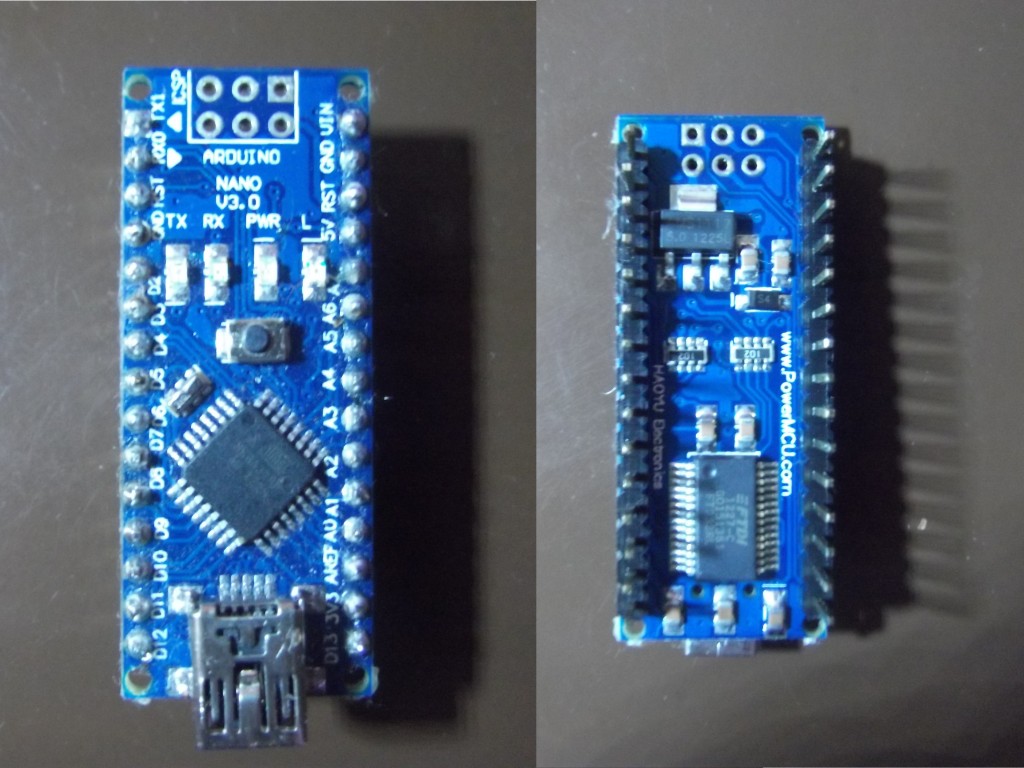The Arduino Nano is a small development board, which is particularly well suited for direct development on breadboards. Through the USB connection software updates can be applied quickly and easily.

Arduino Nano (again a China clone)
The board can be powered via USB. In this case, 3.3 V is available through the FTDI232RL chip, which is also responsible for the USB communication. But this results in a major drawback if you want to use the board in finished circuits without USB powering and use, for example, 3.3V sensors, because an additional voltage converter is necessary then.
Specifications:
- ATMEL ATmega328 with 32KB Flash-RAM (2KB used by bootloader),
2KB SRAM and 1KB EEPROM, clocked at 16MHz - 14 digital inputs and outputs (including 6 PWM channels)
- 8 analog inputs
- I²C support
- serial port
- USB mini connector (FTDI232RL chip)
- separate ICSP connector
- 3.3 V are provided by the FTDI chip, but only when connected to USB
- USB powered, or separately
Example projects with Arduinos:
Sensors: Temperature & humidity measurements with the DHT11
A 1.8 inch TFT color display (HY-1.8 SPI) and an Arduino
Components:
| eBay: | Arduino Nano |
| Amazon: |
Good?
 Deutsch
Deutsch English
English